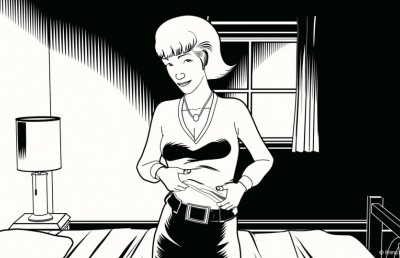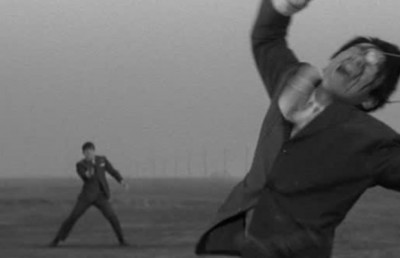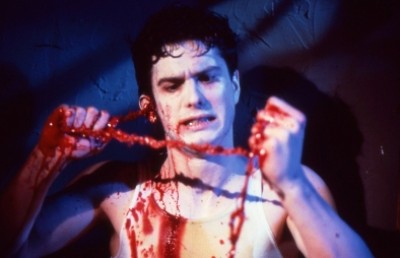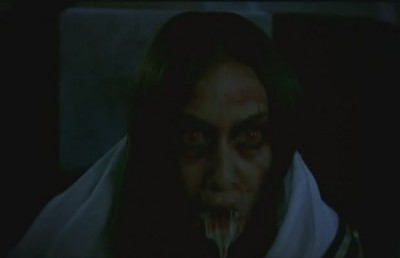A Dozen Defining Moments from Fantasia 2008

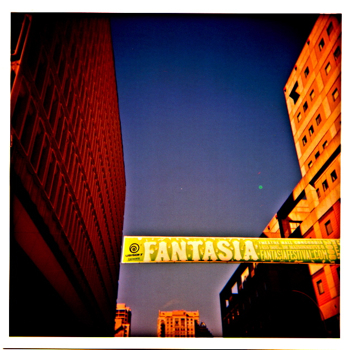
In past reports on the Fantasia Film Festival I have latched onto specific themes (suicide, pregnancy, environmentalism, etc.) to help guide me through the always overwhelming array of programming. This year I’m adopting different strategy, one based on an approach to musical composition known as “moment form.” Here, instead of an overarching structure governing the logic of a particular piece, said piece progresses by means of discrete moments that simply happen – and are then left behind as the next moment arrives. With so many films in such a brief time, the festival experience can be thought of as a kind of moment form composition. Indeed, it is often the fleeting moments from particular films, as well as from the experience of the festival itself, that stand out amidst the blur of endless screenings. And these are the moments that sometimes get lost in reports that try to offer assessments of entire films within such a limited amount of space, often neglecting the festival context in so doing. So without attempting to do justice to the entirety of any single film, I present here a series of twelve moments – in order of appearance – that stood out in the crowd. Taken together, these moments defined this year’s festival for me, and created as coherent a festival experience as could be hoped for.
Warning: Many spoilers ahead.
Sukiyaki Western Django – Takashi Miike – Japan – 2007
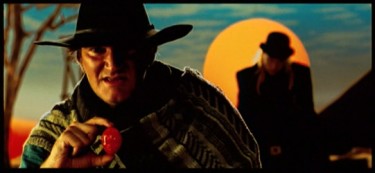
As something of a Miike aficionado, I am always up for discovering new avenues traveled by this unusually prolific director. Here we find Quentin Tarantino opening the film on a superbly cheesy desert set, featuring a deliberately cardboard Mt. Fuji backdrop flanked by a big orange sun hanging on a string. Tarantino acts as the film’s narrator, of sorts, introducing the back-story before the film sets off in a more realist manner. Later in the film we find Tarantino again, now an old man inserted as a character within the narrative proper. At one point he announces that he has always been a die-hard otaku at heart, causing an uproar of enthusiastic screaming and applause from the packed audience to rival any Fantasia response I’ve experienced to date. This moment was the perfect embodiment of the Fantasia experience. A line of empathy opens up between Tarantino and the audience as he is positioned as a fan-boy living out his dream of being in one of his idol’s films, just as many in the audience might dream of being in a Tarantino film. And so Tarantino becomes a member of the Fantasia audience, enabling a kind of transmogrification that can be read through Tarantino’s own films as he increasingly defines his work around practices of fandom through his cinematic homages to all the genres and styles that have influenced him over the years. And this street seems to go two ways, with Miike himself demonstrating his own love of Tarantino by embedding him within his latest outing, itself an homage to the Western genre that so fascinated Tarantino in Kill Bill Vol. 2. This moment acts as the nexus point of a kind of incestuous vicious circle in which the line between creation and influence is almost completely dissolved, and Tarantino’s otaku line invites the audience over the threshold to take part in the orgy. I’m surprised the whole room didn’t implode leaving a black hole in its wake to suck any remaining onlookers into its crushing vortex. Maybe then the administration would finally have to change the horrible seats in the Hall Theatre.
[Rec] – Jaume Balagueró, Paco Plaza – Spain – 2007
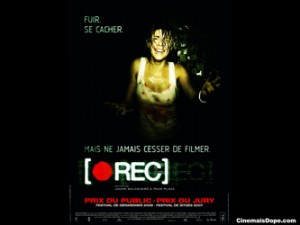
This is almost the perfect fantasia film, featuring jump-cut scare tactics situated within a genuinely creepy context. A reporter follows a group of firemen into an apartment block in response to an elderly woman in distress. They gradually discover that the rabid fever affecting the old woman is spreading, and the block is sealed off. In search of some security, the reporter and her cameraman lock themselves in the uppermost apartment, only to discover that this apartment might actually be the source of the problems raging below. They discover a tape recorder, photos and press clippings of the experiments that led to the outbreak, and come to realize that there are demonic forces at work. Then comes the moment when the decrepit woman at the heart of the mystery is revealed through the putrid green haze of the night vision function on the reporter’s camera, the only light source available to both characters and audience. Though the technique plays directly into a trope of reality TV that is becoming a tad overused, the effect here is striking in the way that it camouflages the make-up and possible CG treatments on the monster, disguising her just enough to keep things frightening. As one guy was heard to exclaim behind me: “what the fuck is that thing?” This moment rides the line between concealment and revelation brilliantly, and reflects the general mastery with which the whole film is rendered.
Timecrimes – Nacho Vigalondo – Spain – 2007
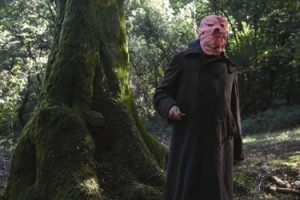
Here we find a middle-aged businessman stumbling into the woods behind his house after spying a beautiful young woman taking her clothes off. Before he can reach the woman, however, he is stabbed in the arm by a mysterious bandaged stranger. Fleeing in terror, the man stumbles upon a research lab next to his house and discovers there a time machine that he uses to try and reset the events of the day. As the film’s first act is repeated over again, there comes a moment when we realize that the protagonist of the film is also the villain, that the mysterious bandaged assailant from whom the protagonist flees IS the protagonist – doubled by a time warp. At precisely this moment a major experiential shift occurs. Subsequent acts end up being re-read from this new knowledge, and what begins as a rather creepy and dark thriller turns into something of an outrageous comedy. This is also the moment when it becomes apparent that the film is being presented from a narrational perspective both restricted and omniscient simultaneously: something that should be impossible, were it not for the fact that the single character we follow for the entire film is being replicated over and over through subsequent travels in time. Along with this realization comes the knowledge that the questions we have about what is happening outside our field of view are being answered right before our very eyes, creating an eerie sense that we are caught in the very machinations of reflexive time that the protagonist opens up for himself. The feeling of this shift between narrative modes, at exactly the moment when we realize the villain and protagonist are one and the same, was exhilarating. I had to go back and see it a second time.
Disciples of the 36th Chamber – Lau Kar Leung – Hong Kong – 1985
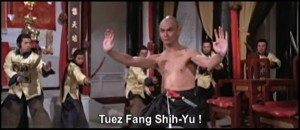
No edition of Fantasia is complete without something from the Shaw Brothers archive. The fact that there was only one such film this year was compensated for by the presence of its star, Gordon Liu, to introduce the film. Made famous to neophytes by his roles in both Kill Bill films, and legendary to kung fu aficionados from his spectacular turns in films like 8th Diagram Pole Fighter, Mr. Liu graced the Fantasia stage with a light kung fu demonstration and proud attestation that, unlike the Hollywood that we’ve become used to, he always performed all his own stunts – apparently without wires! Well, there was clearly some wirework in Disciples of the 36th Chamber, but we’ll give him props for his martial arts expertise nonetheless. And needless to say the crowd showered Mr. Liu with fervent accolades, a shining example of how appreciative the Fantasia audience is towards those responsible for creating the films that they live and breathe. It was a great moment from this year’s festival. Oh, and the movie was pretty good too.
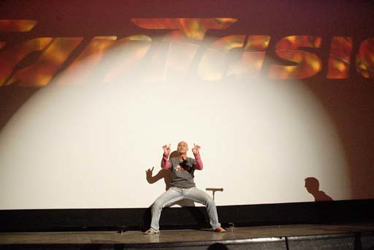
Before the Fall – F. Javier Gutiérrez – Spain – 2007
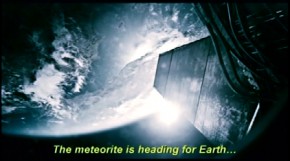
While pondering the cosmos one day it struck me that the sun and the moon both appear to move through the sky, even though this movement is created by opposite phenomena. The moon, of course, is actually moving around the Earth. The sun’s motion, on the other hand, is an illusion created by the Earth’s movement around it. Yet the effect is the same for us: both the sun and moon appear to move across sky from our perspective on Earth. My fascination with his phenomenon has resulted in the development of an obsession for cinematographic techniques that blur the line between camera movement and figure movement. In the example of the sun, our perspective is that of a camera fixed to a moving object, thus creating the illusion that everything else is moving in relation to it. In the example of the moon, we are as though a fixed camera gazing upon a moving figure. The fact that these two opposite perspectives look the same is of no small cosmic importance when postulating the nature of our experience as human beings, and the cinema has the power to play with such existential pondering through relatively simple techniques that force our questioning of the source of apparent motion on the screen. Before the Fall begins with just such a moment. We see a satellite floating above the Earth. A loud crash is heard, and the Earth begins to shake and tremble violently spinning out of control. Or so it appears. In actuality, however, it is the satellite that has been hit, and our perspective is rendered as a camera mounted to it. So the satellite spins out of control, yet the apparent motion of the Earth foreshadows the loss of control that its citizens will experience below as news of the approaching meteorite reaches their ears. It is a powerful opening to a film that ends up being more about one man’s shady past catching up with him than about an entire planet in peril.
Let the Right One In – Tomas Alfredson – Sweden – 2008
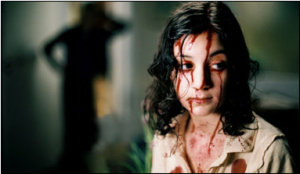
In this generally understated take on vampire mythology, an adolescent boy named Oskar falls in love with a mysterious girl about his own age – or so he thinks. It turns out that she is a vampire grooming him to be her keeper as long as he shall live. While there are fierce moments that refer to the usual tropes – a bite victim going up in dramatic flames when exposed to sunlight – the film is by and large very gentle.

The film’s climactic moment balances serenity with harsh violence in a very special way. At the school pool, Oskar is being held under water by an older bully. Seemingly resigned to letting himself go, he rests calmly beneath the water’s surface as the bully’s hand keeps a tight grip on his head. As the tension builds surrounding how long he’ll be able to remain calm in this situation, we watch as suddenly signs of great violence above the water reveal themselves below. Unbeknownst to the boy, a pair of sneakered feet visible just below the water’s surface rushes impossibly along the length of the pool until being yanked upwards with supernatural force; a severed head plunges to the pool’s bottom; and finally, the arm that has kept the boy down loosens its grip and floats past him, no longer attached to the body that once provided its strength. Vampire girl has come to the rescue, but our awareness of the details is kept to the periphery. The rendering of this scene becomes emblematic of the situation experienced by Oskar himself, whose life will be one of protected indifference to the realities of survival that he’ll only know insofar as he is required to provide for the girl he loves. Shut your eyes and hold your breath; it’ll all be over soon – for another day at least.
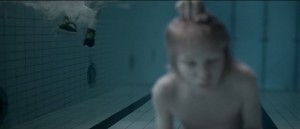
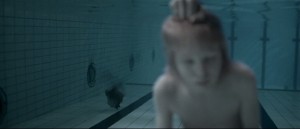

Sparrow – Johnnie To – Hong Kong – 2008
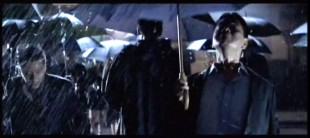
The goal: to win the freedom of the woman he loves, a master pickpocket has to steal her passport back from the mob boss holding her captive – by picking it from the inside pocket of the boss’s trench coat while surrounded by his henchmen under a heavy rainfall. The result: pure poetry in motion, a cinematic ballet of umbrella clad pickpockets dueling it out in slow motion under the precipitous weight of a Hong Kong summer’s night. I had no idea what was going on, but it was sure pretty to look at. One of Johnny To’s more impressive set pieces, even if the narrative line was hard to trace through the action.
Second Skin – Juan Carlos Pineiro-Escoriaza – USA – 2008
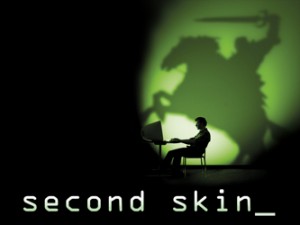
Upon leaving this film about people who end up spending most of their time and money on virtual environments like World of Warcraft and Second Life, I was talking with my friend Shelley about how absurd the whole thing seemed. As we passed through the exit, however, I was reminded that I had another film to see and thus could not leave the theatre for fear of losing my seat. Shelley, the more balanced of the two of us, laughed as she equated my cinemania with the addictions shown by the gamers in the film. As she strolled free of my July prison I shouted after her: “It’s okay in my case because I’m not spending any money on these films!” Though it’s true that my media pass allows me free access to the entire festival, my compulsion to see as many films as possible does strike a familiar chord with some of the situations explored by this wonderful documentary. Food for thought as I settled back into my seat for the next film, whatever it was…
Velvet Hustler – Toshio Masuda – Japan – 1967
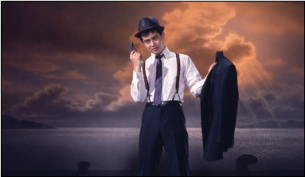
Though part of the “Nikkatsu Action” series, this film might be better categorized as “Light Nikkatsu Seaside Strolling with Conversation and Occasional Dance Number.” But the dance number made the whole film worthwhile. It was an indescribable and rather unexpected moment awash in the lurid colour of a 60s pop cabaret, setting this film far apart in both tone and temperament from the other two entries in the series.
Tokyo Gore Police – Yoshihiro Nishimura – Japan – 2008
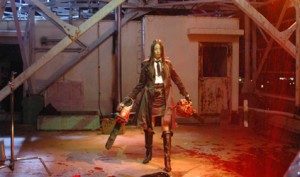
Featuring actress Eihi Shiina of Takashi Miike’s Audition fame, along with the impressive special effects portfolio of first-time director Yoshihiro Nishimura, the hype for this film was severe. Tack on the fact that Nishimura and Shiina were in attendance with actor/action choreographer Tak Sakaguchi, and this was one of this year’s major event films. By the time the first 10 minutes were done it was clear that Tokyo Gore Police was determined to set the bar high for psychedelic gore treatments in overcrisp high definition, demonstrating that Fantasia’s HD facilities have come along way since the festival first moved to the Concordia campus in 2003. This was intensity well serving of a Fantasia midnight crowd, and was one of those smoldering mid-July moments in Montreal that make this festival what it is.
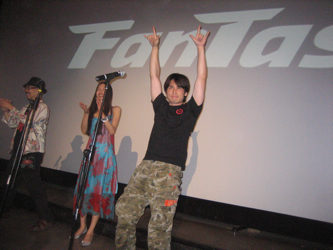

I Think We’re Alone Now – Sean Donnelly – USA – 2008

Asberger’s-afflicted Tiffany-stalker Jeff Turner exclaims: “the world is like a rowboat on a sea of assholes; flail your oars as wildly as you can!” At this moment I laughed harder than I did at any other point in the festival. It’s funny because it’s true. Tell it like it is, Jeff. And while you’re at it, be careful not to get hit by anyone else’s flailing…
Repo! The Genetic Opera – Darren Lynn Bousman – USA – 2008
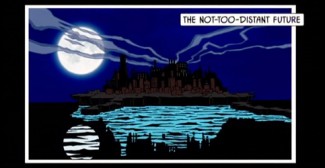
No festival would be complete without at least one moment of fear that I might actually fail to get into one of the films on my must-see list. And this moment came in the lobby outside the Hall Theatre as we waited for the doors to open for Repo! The Genetic Opera. I was in the usual Press/VIP lineup, but noticed that many people around me had tickets in their hands. Strange, given that the ticketholders lineup is usually outside. I was then told that no press passes would be accepted for this screening as the demand from the public was too high to sacrifice seats for we lowly journalists. Apparently there was a press screening of the film that morning to compensate for the situation, but although I am on the press email-list I did not receive the notification that they sent out. And so panic began to set in. A number of press folks in the same situation had gathered to the side in the hopes that they might be let in at the last minute, but some of us didn’t want to take the chance. My colleague Donato snapped up a ticket from a scalper outside. I won’t mention how I got in, but I was livid that we had to resort to our respective methods in order to see one of the major films of the festival. Even if I had received notice of the press screening, anyone who knows anything about Fantasia understands that to properly appreciate many of the films shown here they must be experienced with an audience of fans on hand. I believe that much of the stodginess apparent in the film journalism industry stems from too many films viewed in empty rooms at 9 am with stale coffee and hard croissants in hand – or even worse, watching the films on DVD screeners made from poor sources while dealing with household chores and catching up on email and phone calls. I stand firm in my belief that the Fantasia experience depends on its audience, as even the most ghastly film can play well when greeted by an enthusiastic crowd. My job is to report on this experience, and I wasn’t about to miss Repo because of bad press-relations, especially as I was about to leave for a conference in Brazil and this was to be my last film of the festival. So by the time I got in I was suitably fired up, and the film didn’t disappoint. The lights went down and the comic-book intro detailing the narrative’s back-story kicked in. I was super-stoked. This moment bridged the anxiety of the lobby and the expectations for what the film would deliver, binding them together to fuel an adrenaline rush that lasted the entire duration of the film and on into the rest of the evening. As such, the opening of Repo was one of the most intense moments of the festival for me, and made for as good a finish to the run as I could have hoped. I don’t know how I would have responded to the film if conditions had been different, and I’m glad I didn’t have to find out.



